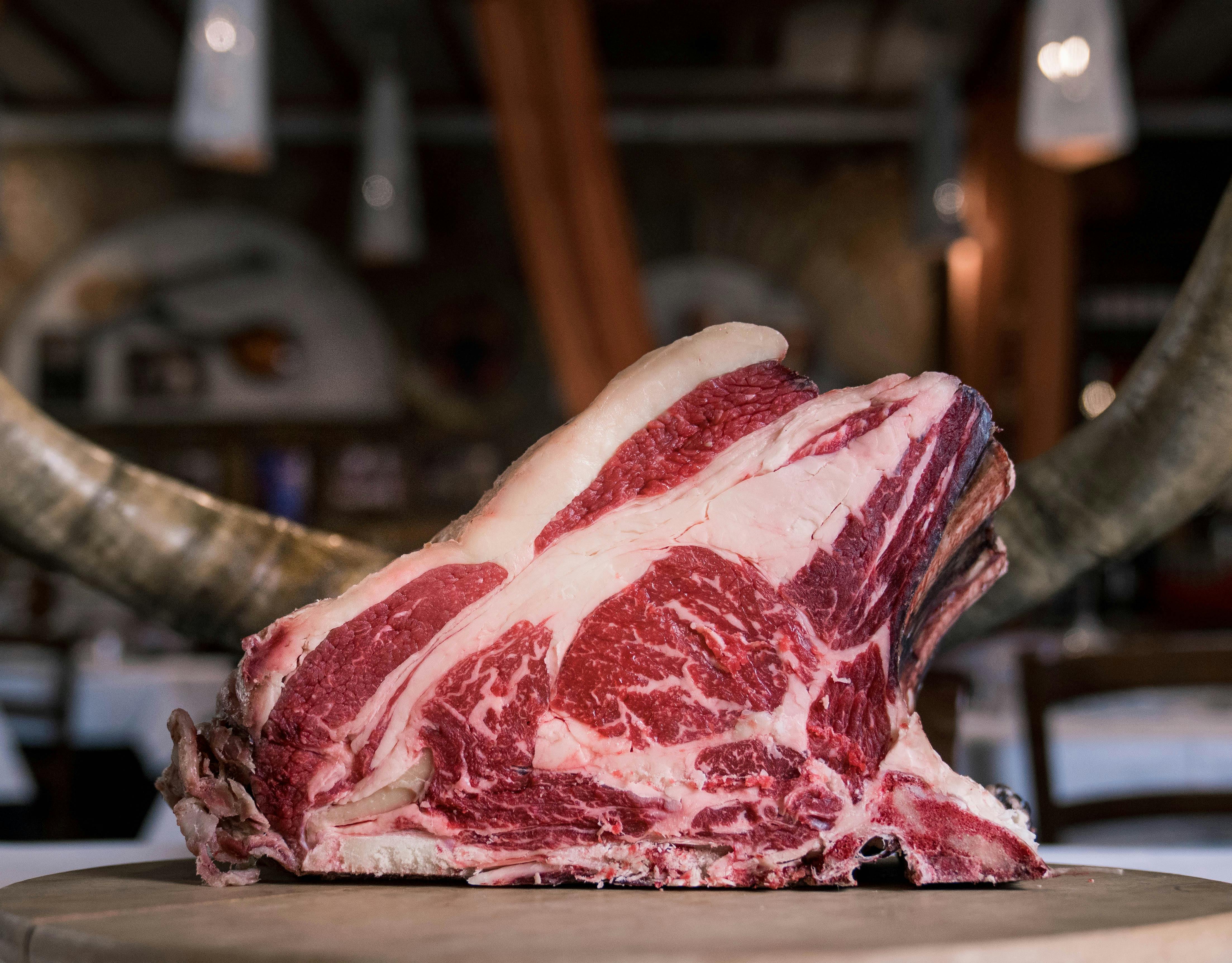Essential Guide to Cooking Ribeye: Proven Techniques for Juicy Results in 2025


Understanding Ribeye Steak Characteristics
The ribeye steak, known for its incredible flavor and tenderness, stands out as a favorite among steak lovers. Its distinctive marbling contributes not just to the taste but also to the juiciness that makes ribeye a top-notch choice. Understanding ribeye’s cut characteristics, such as the fat distribution and richness, can significantly affect how you cook and season it. Marbled ribeye steak generally has intricate fat patterns, creating a burst of flavor and tenderness when cooked correctly. When learning how to cook ribeye steak, recognizing its unique traits helps ensure that your preparation techniques emphasize its natural flavor and juiciness.
Ribeye Cut History
The history of the ribeye steak is as rich as its flavor. Traditionally, the ribeye originates from the rib section of the cattle, and its prominent marbling is a result of the animal's aging and feeding practices. As culinary practices evolved, ribeye became increasingly popular because of its outstanding taste and texture. Learning about the ribeye cut history may enhance your appreciation for this versatile steak, offering insight into the best ways to season and cook ribeye for various occasions. From celebrations to simple family dinners, a well-cooked ribeye carries a cultural significance in many cuisines around the world.
Sourcing Quality Ribeye
Choosing the right ribeye steak significantly impacts the flavor profile and cooking experience. When selecting ribeye, look for well-marbled cuts with an even distribution of fat. High-quality ribeye brands will often display superior marbling, enhancing the richness and tenderness of the meat. Understanding how to pick ribeye by inspecting its color and texture will help ensure you get the best steak for your cooking endeavors. Clear labeling on packaging indicating grass-fed or grain-finished could influence both taste and health aspects related to ribeye steak nutrition.
Essential Ribeye Cooking Techniques
Delving into ribeye cooking methods is critical for achieving the **perfect ribeye steak**. Various techniques exist, such as grilling, broiling, and smoking. Each method can bring out different flavors and textures in the meat. While learning how to cook ribeye steak, familiarity with these techniques is essential for maximizing the flavor and ensuring tasty outcomes. Techniques like proper searing are fundamental, allowing the outside to achieve that crispy, golden crust, which contrasts beautifully with the juicy interior—all vital aspects of a gourmet ribeye steak experience.
Grilling Ribeye Steak
Grilling ribeye steak is a renowned method that heightens its natural flavors. The high heat of the grill sears the outside, locking in juices while creating that appealing char. It’s essential to preheat the grill to achieve optimal ribeye steak grilling time. Aim for a medium-high heat setting and cook each side until the perfect ribeye steak internal temperature is reached—130°F for medium-rare, up to 140°F for medium. Experimenting with a dry rub or simple seasoning of salt and pepper can elevate the flavors and make for an unforgettable dish.
Sous Vide Ribeye
For those who prefer precise cooking techniques, sous vide ribeye offers the ideal balance between control and taste. By cooking the ribeye in a water bath at a consistent temperature, it guarantees doneness without the risk of overcooking. Optimal ribeye steak cooking time through sous vide generally requires about 1-3 hours, depending on the desired tenderness. After sous vide cooking, it’s crucial to sear the ribeye to develop a desirable crust. Using scallions or garlic as part of the finish can add an aromatic touch that enhances the steak's already robust flavors.
Ribeye Flavor Enhancement Techniques
Achieving the best ribeye requires not only the right cooking methods but also the perfect seasoning. Mastering ribeye seasoning enhances its flavor while allowing its natural richness to shine. Exploration of different ribeye seasoning ideas—from smoky spice blends to fresh herb rubs—can lead to exciting culinary adventures that transform your ribeye into something extraordinary. Complementing the meat with the appropriate sauces or side dishes can elevate your meal considerably, demonstrating the versatility of this beloved beef cut.
Ribeye Seasoning Ideas
When it comes to ribeye seasoning, don’t hesitate to explore! While simplicity often shines through with just salt and pepper, layer flavors using garlic powder, onion powder, or fresh herbs like thyme and rosemary. A few drops of Worcestershire sauce or even a marinade using soy sauce and citrus can also be beneficial for infusing the ribeye steak flavor. If you’re passionate about ribeye cooking, this is an excellent opportunity to experiment with seasoning blends. Documents such as ribeye steak seasoning blends can break down various flavor profiles to match your personal preference.
Ribeye Marinades for Flavor
Marinating ribeye steak can profoundly influence flavor depth. A basic marinade might include olive oil, garlic, herbs, and acid (like vinegar or citrus juice) to tenderize the meat while adding complex flavors. For those curious about how to marinate ribeye steak effectively, immerse your steak in the marinade for at least one hour, although overnight soaking can result in deeper flavor integration. When paired with sides like roasted vegetables or creamy mashed potatoes, marinated ribeye can transform a meal into a memorable feast.
Ribeye Cooking for Special Occasions
Ribeye steak is an ideal centerpiece for special occasions due to its rich flavor and tender texture. Learning how to cook ribeye for dinner parties can aid in impressing your guests with an unforgettable dining experience. Whether celebrating anniversaries, holidays, or inviting friends, exploring ribeye steak dinner ideas with accompanying sides elevates the meal further. Presentation, garnishing ideas, and meal preparation techniques are critical to delivering that top-tier restaurant experience at home.
Ribeye Steak Dinner Ideas
Creating a well-rounded ribeye steak dinner necessitates thoughtful planning. Pairing ribeye with sides ensures the meal is satisfying and cohesive. Classic accompaniments include garlic mashed potatoes, creamy risotto, or grilled asparagus. When curating ribeye cooking tips for special occasions, consider adding personal touches—perhaps a gourmet sauce or a unique vegetable medley that reflects your tastes. Presenting the dish with a side salad dressed with a robust vinaigrette can balance the richness of the steak, enhancing the overall flavor harmony on the plate.
Ribeye Presentation Techniques
Effective presentation techniques elevate your ribeye dish. Consider plating the steak with complementary herbs and sides artistically arranged around it for visual appeal. Enhancing the presentation with colorful vegetables and textures transforms your meal into an inviting feast. Providing garnishing ideas for ribeye, such as sprigs of fresh parsley or a sprinkle of coarse sea salt, not only adds eye-catching visuals but also enhances the nose-watering scent that exudes when serving the steak. Presentation is an integral step for ribeye prepared for special occasions, symbolizing the care taken in crafting a noteworthy dining experience.
Key Takeaways
- Understanding the characteristics of ribeye steak is crucial for optimal preparation and cooking.
- Employ effective cooking methods like grilling or sous vide for guaranteed delicious results.
- Experimenting with various ribeye seasoning ideas enhances flavor depth and complexity.
- Contribution of side dishes significantly completes a ribeye steak meal for special occasions.
- Mastering presentation techniques adds to the overall dining experience, drawing guests in.
FAQ
1. What is the best way to cook ribeye steak?
The best way to cook ribeye steak depends on personal preference but popular methods include grilling and sous vide. Grilling enhances the char and flavor, while sous vide allows for perfectly controlled doneness. Both methods can yield delicious results with the right cooking time and temperature.
2. How do I know when my ribeye is done?
Ribeye doneness levels can be gauged using a meat thermometer. For medium-rare, aim for an internal temperature of around 130°F, while medium is closer to 140°F. Following the ribeye doneness chart will help you understand the ideal cooking temperatures for your desired steak finish.
3. Can I prepare ribeye in the oven?
Yes, you can successfully cook ribeye in the oven. Start by searing the steak in a hot pan to develop a delicious crust, then transfer it to a preheated oven. This method combines stovetop and oven techniques, ensuring even cooking while maintaining juiciness.
4. What are some popular ribeye steak recipes for barbecue?
Barbecue ribeye steak recipes can include marinated options, grilled with a spice rub, or topped with barbecue sauce during the final moments of grilling to caramelize the flavors. The versatility of ribeye allows for various creative adaptations suitable for outdoor grilling.
5. What's the difference between ribeye and sirloin?
The main difference between ribeye and sirloin lies in their fat content and tenderness. Ribeye has more marbling, which results in a richer flavor, while sirloin is leaner and generally less expensive. Choosing between the two will depend largely on taste preference and desired cooking methods.
6. How do I properly season ribeye steak?
To properly season ribeye steak, use salt and pepper as a base, then experiment with herbs and spices like garlic powder, smoked paprika, or fresh rosemary. A good marinade can also help deepen the flavor; just ensure you don't overpower the natural characteristics of the meat.
7. What side dishes go well with ribeye steak?
Ribeye steak pairs excellently with side dishes like garlic mashed potatoes, grilled vegetables, or a fresh mixed salad. Additionally, starch options such as risotto or couscous can complement the richness of the ribeye, creating a balanced meal experience.
